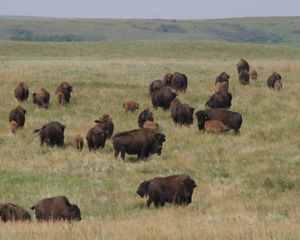Description
Surrounded by encroaching development, Aurora Prairie preserves and protects a rare piece of land for future generations—an original, intact prairie. From the Topeka Shiner a nearly-extinct minnow to one of the state’s rarest plants, the small white lady’s slipper, this preserve supports an abundance of plant and animal life.
Standing amid the wetlands flanking Medary Creek, one can begin to understand the diversity of life that once flourished here—from the beavers whose dam pools water in the dry summer months, to the snapping turtles that call it home and the waterfowl that fly overhead.
Many people don’t realize that America’s great prairies rivaled Africa’s Serengeti in its amazing diversity of wildlife and flora—from the herds of bison, elk and antelope to colonies of prairie dogs feasting on more than 250 species of plants—the American plains truly were breathtaking. However, of the world’s many grasslands, America’s tallgrass prairie shows the greatest change, with only 1 percent of native prairie remaining.
Why TNC Selected This Site
Native prairie is rare and precious in South Dakota.
In the 1970s, two conservation-minded citizens spent a year exploring South Dakota for these remaining ecological gems. They uncovered Aurora Prairie and launched a campaign to save it. TNC joined their mission of preserving and protecting this land for future generations.
TNC has a long tradition of working collaboratively with partners—like these two men. By working together, more can be accomplished. Throughout South Dakota, TNC enlists the help of communities, businesses, government agencies, multilateral institutions, individuals and other non-profit organizations.
Learn more about TNC’s approach to partnerships.
What TNC Has Done/Is Doing
Fire plays a natural role in prairies, clearing brush and encouraging the growth of native plants. Over time, plants on the prairie have evolved to thrive amid fire, which TNC uses extensively as a management tool.
In the 1980s when scientists were just beginning to uncover the importance of restoring fire to ecosystems, Aurora Prairie was the site of a study that examined the importance of fire to control harmful, nonnative species.



